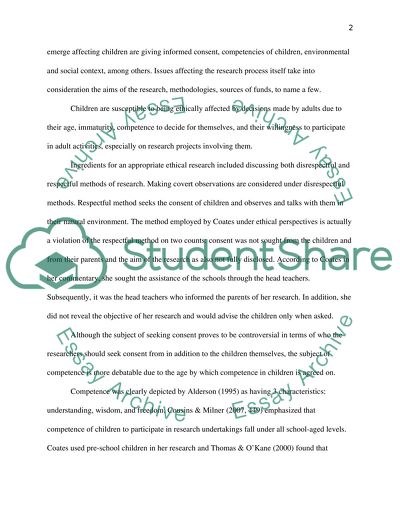Cite this document
(Why Do Ethics Matter in Research With Children and Young People Essay, n.d.)
Why Do Ethics Matter in Research With Children and Young People Essay. Retrieved from https://studentshare.org/ethics/1564515-why-do-ethics-matter-in-research-with-children-and-young-people-as-well-as-making-use-of-the-relevant-course-materials-your-answer-should-make-reference-to-cousin-and-milner-2007
Why Do Ethics Matter in Research With Children and Young People Essay. Retrieved from https://studentshare.org/ethics/1564515-why-do-ethics-matter-in-research-with-children-and-young-people-as-well-as-making-use-of-the-relevant-course-materials-your-answer-should-make-reference-to-cousin-and-milner-2007
(Why Do Ethics Matter in Research With Children and Young People Essay)
Why Do Ethics Matter in Research With Children and Young People Essay. https://studentshare.org/ethics/1564515-why-do-ethics-matter-in-research-with-children-and-young-people-as-well-as-making-use-of-the-relevant-course-materials-your-answer-should-make-reference-to-cousin-and-milner-2007.
Why Do Ethics Matter in Research With Children and Young People Essay. https://studentshare.org/ethics/1564515-why-do-ethics-matter-in-research-with-children-and-young-people-as-well-as-making-use-of-the-relevant-course-materials-your-answer-should-make-reference-to-cousin-and-milner-2007.
“Why Do Ethics Matter in Research With Children and Young People Essay”. https://studentshare.org/ethics/1564515-why-do-ethics-matter-in-research-with-children-and-young-people-as-well-as-making-use-of-the-relevant-course-materials-your-answer-should-make-reference-to-cousin-and-milner-2007.


